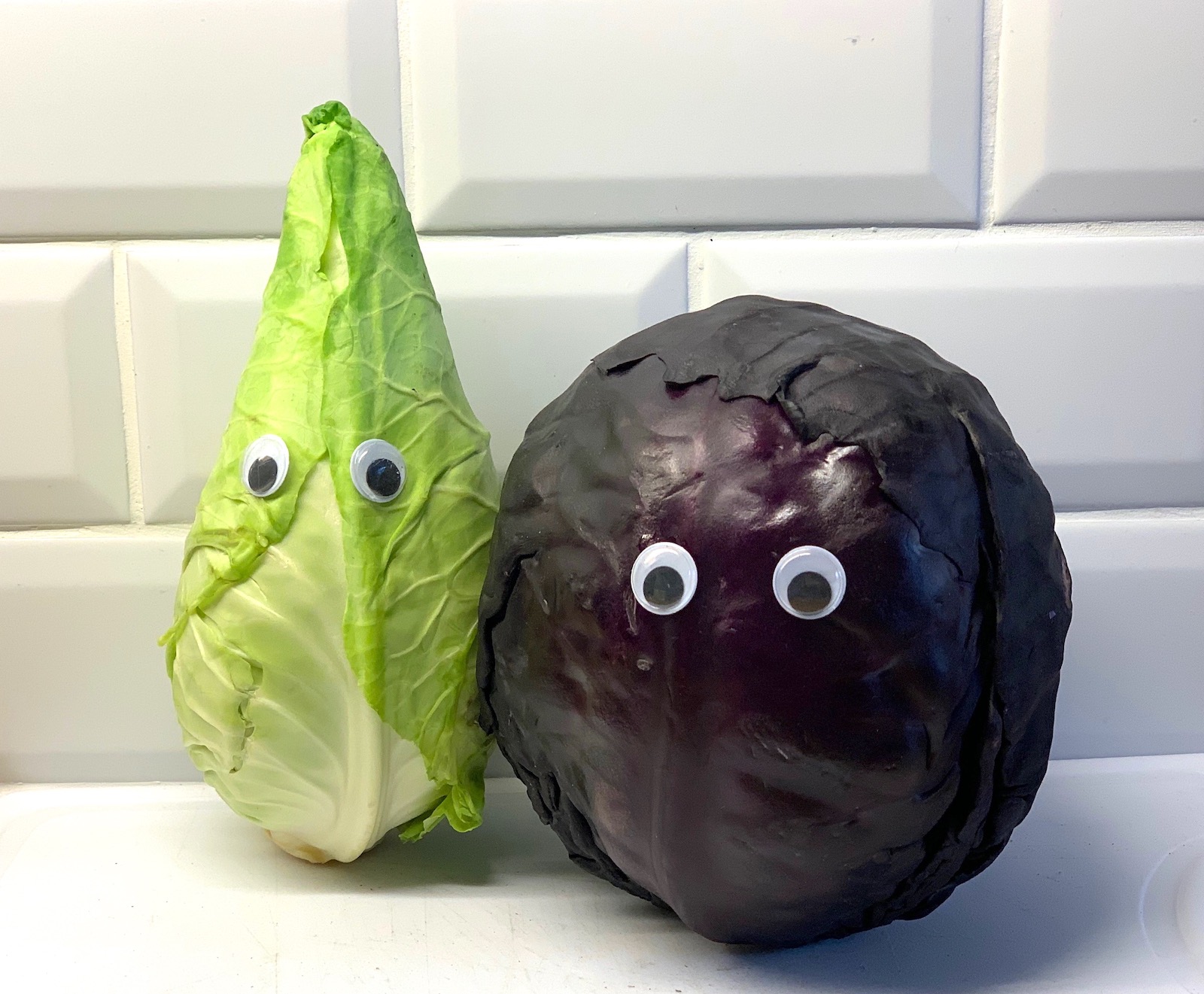What Actually Are Cabbages?!
The History Of Cabbages
The history of the cabbage is extensive, to say the least! The initial origin of the cabbage is unknown because it descends from the Brassica family which is grown all around the world. The most common theory is that it originated from Britain and continental Europe thousands of years ago. It is thought its wild predecessors had dense leaves that could retain water, allowing them to endure colder environments.
The early Romans regarded headed cabbages as a luxury and called it brassica as it was thought of as superior to all other vegetables and we don’t blame them!
The cabbage was first taken to America by Jacques Cartier in the 16th century and introduced to Australia during the late 18th century. However, in East Asia, cabbages have been enjoyed since BC and were cultivated in North China, but the variants were non-heading cabbages such as kale and pak choi.
What Varieties Of Cabbage Are There?
There are over 400 varieties of cabbage all growing throughout the world, but the most popular in the UK are green, white, red and Savoy. The variety of cabbage considered to be the most regular is green cabbage which like most varieties have thick leaves and are round in shape.
Cabbage Consumption
The Nutritional Benefits Of Cabbages
Cabbages are full of nutrients, they’re an excellent source of vitamins C, K and B1, as well as dietary fiber. Fun fact: 100g of cabbage is around 50% of your daily recommended vitamin c intake and also contain vitamin B1. Vitamin C contributes to the reduction of tiredness whilst vitamin B1 contributes to the normal function of the heart.
Seasonality Of Cabbages
Cabbages are never really out of season as their resillience to cold conditions means they’re able to be grown and harvested all year round. They are most popular in October in the UK and are considered at their best in late autumn to early spring time.
How Do Cabbages Grow?
Cabbages actually start off as plants and have a long growing proccess. As they are biennial plants meaning they have a two year growing process, cabbages are grown for seeds in the same way as they’re grown for consumption. In the first year, the plant forms a head that flowers in the second year.
Brassica’s – much like apple trees, need to be pollinated and have seed stalks that grow after the flower is pollinated by insects. The seeds look just like peppercorns and can be found in pods growing from the seed stalk. The pods turn a yellow white colour when ripe and will naturally fall off immediately when ready.
It’s common that farmers begin growing their cabbage plants in plant pots and transplant in the ground when they have 3-4 leaves.
Where Do Our Cabbages Grow?
Naylor Farms, situated near Spalding, Lincolnshire, has been a quality producer of vegetables since the early 1930s. It is a family run farm which is now in its 3rd and 4th generation. The family consists of father, Brian, and son, Simon Naylor, who both manage all aspects of the operation. The Naylor’s supply us with top quality produce especially white cabbage and red cabbage, whilst our kale is sourced from Lancashire.
F.B Emison and Son is our supplier for Pak Choi. The Emison family-run farm started almost 60 years ago, growing tomato & lettuce. 40 years later they decided to grow Pak Choi all year round. The farm is 6.5 acres, with over an acre of polytunnels built exclusively for the growth of the Pak Choi. Emison’s are a member of Red Tractor Scheme, Assured Produce and Salsa. We have worked with them for over 10 years.
How Do Cabbages Get Their Red Colour?
It’s actually due to a coloured water-soluble pigment called anthocyanins present in the soil, which is also responsible for the colour of berries, currants, grapes and other fruits and veg. The pH value anthocyanins may appear red, purple, blue, or black.
Are Cabbages A Root Veg?
No, cabbages do have roots but the edible part of the cabbage, referred to as the head, grows above the ground, so they are not classed as root vegetables.
Types Of Cabbage
Savoy Cabbage
Red Cabbage
White Cabbage
Brussels Sprouts
Curly Kale
Our Cabbages
Here you can find some of the varieties of cabbage swe stock, when available. Please contact our team to discuss your requirements, or login to our online ordering or app to place your order.
Recipes With Cabbage
Here’s some delicious recipe inspiration for your menus using cabbages!
Pan Fried Skrei, Red Cabbage, Mussels, Carelian Caviar, Cucumber & Parsley Stalks, Champagne Sauce
Char Grilled Hispi Cabbage, Grilled Rump, Worcestershire Sauce Mayo, Crispy Shallots, Meat Glaze
Roast Partridge,Savoy Cabbage, Bacon & Chestnuts, Celeriac Fondant & Puree, Red Wine Sauce
Join Our Mailing List
By signing up to Oliver Kay e-mails, you confirm that you’re aware your personal data will be used in line with our Terms and Conditions and our Privacy Policy.


